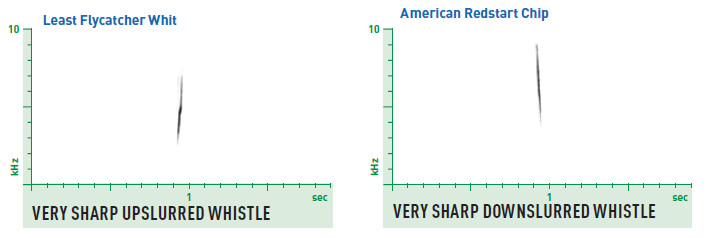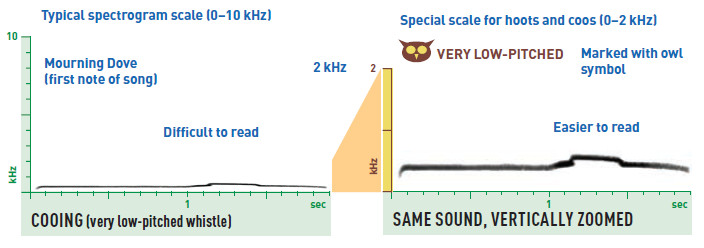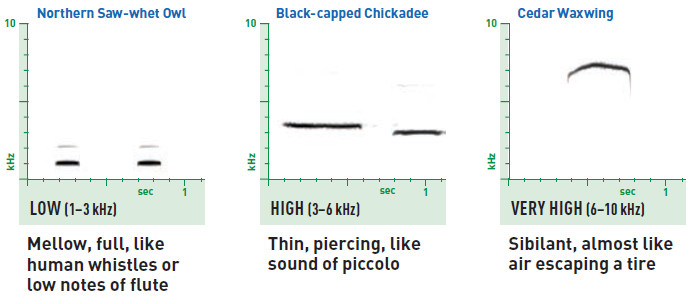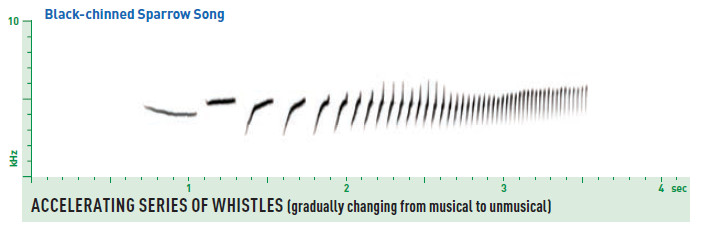Whistles and Hoots
(Peterson Field Guide to Bird Sounds, interactive version of pp. 16-17)
Tone quality changes with pitch
The pitch of a sound has a significant impact on its tone quality. This is true of all sounds, but it is particularly true of whistles.
Hoots and coos are low-pitched whistles
The hooting of owls and the cooing of doves are just whistles that are lower than about 1 kHz. Similar low whistles can be made by blowing across the top of a large bottle. Extremely low-pitched sounds like these are illustrated using a different vertical scale than the rest of the spectrograms in this book, and marked with the symbol of an owl.
First note of Mourning Dove Song (too low-pitched for some computer speakers):
Pitch and whistle quality
As whistles rise to a pitch above hooting and cooing sounds, they first take on a mellow quality. As they continue to rise, above 3 kHz or so, they gradually become thinner and more penetrating. Whistles above 6 kHz tend to sound sibilant, almost like the hiss of air escaping a tire.
Northern Saw-whet Owl:
Black-capped Chickadee:
Cedar Waxwing:
Ticking sounds and sharp whistles
As explained on page 14, nonvertical lines on the spectrogram represent whistles, and vertical lines represent ticks. As whistles become sharper (more vertical on the spectrogram), they gradually lose their musical quality and become more like ticks.
 The song of the Black-chinned Sparrow provides an excellent example of this phenomenon. The song is an accelerating series of whistles in which each successive note is slightly sharper and therefore less musical. The first half of the song is musical because the whistles are closer to the horizontal, but as the song continues, the whistles approach the vertical and become decidedly ticklike. The last few notes just sound like a toneless buzz.
The song of the Black-chinned Sparrow provides an excellent example of this phenomenon. The song is an accelerating series of whistles in which each successive note is slightly sharper and therefore less musical. The first half of the song is musical because the whistles are closer to the horizontal, but as the song continues, the whistles approach the vertical and become decidedly ticklike. The last few notes just sound like a toneless buzz.
The Whit calls of Empidonax flycatchers and the Chip calls of warblers are examples of very sharp, unmusical whistles. Whits are sharp upslurs; Chips are downslurs.
 Least Flycatcher Whit:
Least Flycatcher Whit:
American Redstart Chip:
(Next: pp. 18-19: The quality of a trill / Burry and buzzy sounds)


